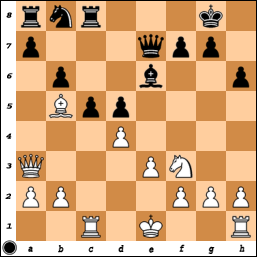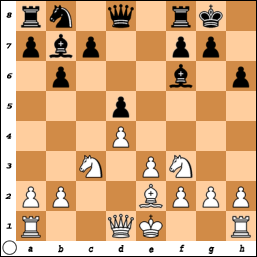Fischer-Spassky WC Match(6) 1972
Analysis:
The first critical position just outside the opening is:

One year later in 1973 Geller won this attacking game with an improvement over Spassky's 14th move:
Timman-Geller 1973
So much for 14. Bb5. Well not quite. Certainly 14...Qb7 is a good response in reply defending the rook on a8 and preparing an advance of the queenside pawns with tempo. I tried this position with the Stockfish engine on ICC and the computer considers the position after 14...Qb7 to be equal. I'm encouraged by that prospect and I plan to spend some time understanding the nuances of this position. I can easily remember the opening sequence to this point because I can remember a few key waypoints. I also understand some of the subtleties of 2 of Black's possible replies to 14. Bb5 which of course is not a great move except perhaps for equality and a position I may understand better than my opponent.
Moving on to the Karpov era:
Karpov figures Spassky learned from the above games and dutifully deviates (and wins)
Karpov - Georgiev 1994
In both the games there's a critical decision by White to exchange bishop for knight on move 9 followed by clarifying the center leading to this position:
 I tend to favor Black with the bishop pair here. Black also has some simple concepts such as ...Nd7 and ...c5. White on the other hand needs specific calculation to make anything work as careless opening of the position will favor Black. Getting the feel for this position will take more time and games.
I tend to favor Black with the bishop pair here. Black also has some simple concepts such as ...Nd7 and ...c5. White on the other hand needs specific calculation to make anything work as careless opening of the position will favor Black. Getting the feel for this position will take more time and games.
The latest high level game with a win for White I can find is this game from 2009: Grischuk-Gelfand 2009
From this handful of games some patterns are emerging.
- White seems to delay castling until play on the queenside becomes clear. To that end, White often plays b4 and the game revolves around whether Black can use the queenside majority or whether White can stymie play in that sector and begin play in the center and on the kingside.
- White often ends up with an isolated pawn on d4 which can become a spearhead for a central advance or kingside attack.
- White sometimes maneuvers Rfe1, Bf1
The other main Botvinnik deferred line is the Cambridge Springs variation of the QGD. This is quite tricky to face without some theoretical foundations. In may games on ICC i'm inadvertently landing in the pawn sacrifice lines without adequate preparation. The odd looking lines with Qd2 which hold on to the material just don't appeal to me. Here are some games I like in this line.
Kasparov-Smyslov 1984. A nice strategic win by Kasparov in a Qd2 line of the Cambridge Springs




No comments:
Post a Comment